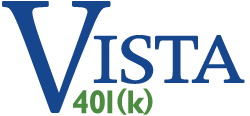866-325-1278
Customer Service

Account Login/Enroll
All Participants and Eligible Employees Must Register as New Users.
To register enter your social security number with no dashes as username and your Date of Birth as your password. (Example: 01011900)
STOP! If you are a MADISON or OKEECHOBEE employee, please do not proceed. To Open an account, stay on the Vista 401(k) homepage and select “401(k) Plan” across the top in blue. Next choose “Forms” from the drop down. Here you will find a fillable form for your district. Please follow the directions on the form to sign up for this plan. All others may proceed.”
My Account Login
All Participants and Eligible Employees Must Register as New Users.
To register enter your social security number with no dashes as username and your Date of Birth as your password. (Example: 01011900)
STOP! If you are a MADISON or OKEECHOBEE employee, please do not proceed. To Open an account, stay on the Vista 401(k) homepage and select “401(k) Plan” across the top in blue. Next choose “Forms” from the drop down. Here you will find a fillable form for your district. Please follow the directions on the form to sign up for this plan. All others may proceed.”
Vista 401(k) Plan
Glossary
[text-blocks id=”29354″ slug=”glossary-b”]
[text-blocks id=”29362″ slug=”glossary-c”]
[text-blocks id=”29366″ slug=”glossary-d”]
[text-blocks id=”29369″ slug=”glossary-f”]
[text-blocks id=”29371″ slug=”glossary-g”]
[text-blocks id=”29373″ slug=”glossary-i”]
[text-blocks id=”29375″ slug=”glossary-l”]
[text-blocks id=”29377″ slug=”glossary-m”]
[text-blocks id=”29379″ slug=”glossary-n”]
[text-blocks id=”29381″ slug=”glossary-p”]
[text-blocks id=”29383″ slug=”glossary-q”]
[text-blocks id=”29385″ slug=”glossary-r”]
[text-blocks id=”29387″ slug=”glossary-s”]
[text-blocks id=”29389″ slug=”glossary-t”]
[text-blocks id=”29391″ slug=”glossary-v”]
[text-blocks id=”29393″ slug=”glossary-w”]
Home | About Us | 401(k) Plan |401(k) Funds | Learning Center | Blog | Contact Us
P.O. Box 1878 Tallahassee, Florida 32302-1878
866-325-1278


